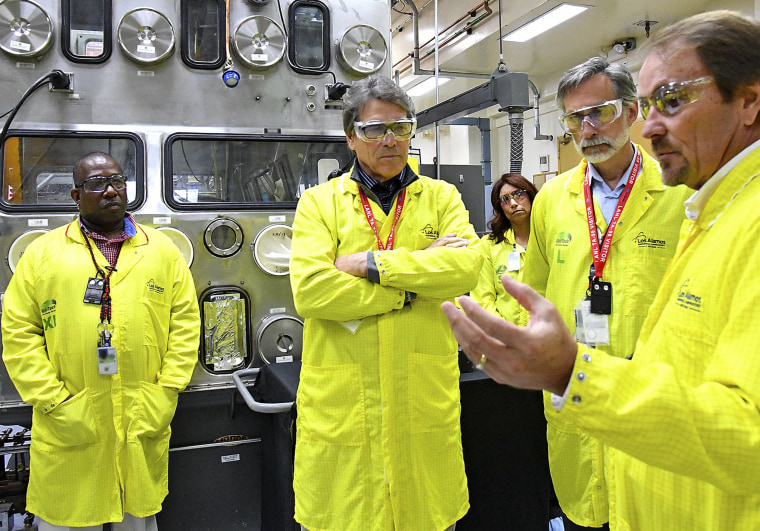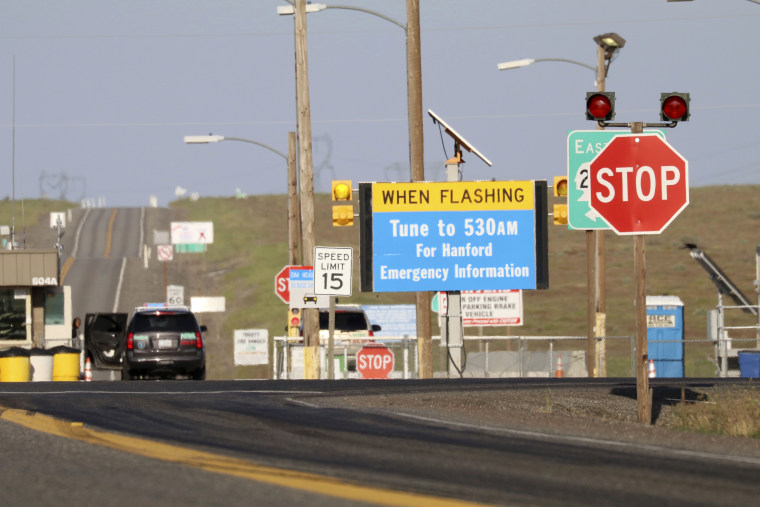U.S. Energy Secretary Rick Perry said Wednesday that his agency will conduct a study to determine what led to the collapse of a tunnel at the Hanford Nuclear Reservation in Washington state.
About 200 workers at the nuclear waste site were told to shelter in place Tuesday after the collapse of a 20-foot section of tunnel where radioactive waste was being stored.
An official at the Hanford Joint Information Center said Tuesday that there were no injuries or reports of radiological release, and on Wednesday, White House deputy press secretary Sarah Huckabee Sanders said the administration was "confident at this point that there hasn't been a radiological release."
The tunnel is next to the massive Plutonium Uranium Extraction Facility, or PUREX, which is in the center of the Hanford Site in an area known as 200 East. It has not been occupied in 20 years and remains contaminated by radioactivity.
On Wednesday, workers began filling the hole with soil, the Energy Department said. About 50 truckloads of soil will be used to fill the hole, the department said on a website about the incident.
"Employee safety is our number one focus and within the last hour, crews have begun the long process of slowly and methodically filling the collapsed portion of that tunnel with soil," Destry Henderson, deputy news manager for the Hanford Joint Information Center, said Wednesday.
Perry said Wednesday that the tunnel had obviously deteriorated and that the question that needs to be answered now is why.

Perry made the comments during a tour of Los Alamos National Laboratory in northern New Mexico, another federal site dealing with the cleanup of Cold War-era waste from decades of bomb-making and nuclear research. Los Alamos was among the federal installations that helped develop the first atomic bomb during World War II.
Perry acknowledged the problem with nuclear waste, saying the nation can no longer kick the can down the road because American lives and the health of some citizens are in jeopardy.
He said the federal government has failed over the years to remove the waste in a timely manner and pledged to make progress on a multibillion-dollar problem that has transcended previous administrations.
Some nuclear experts have called the Hanford site "the most toxic place in America," and in 2016, NBC News interviewed current and former workers who said they were exposed to toxic materials and sickened from their time at the site.
Plutonium was produced at Hanford for America's nuclear arsenal until 1980. Now it's run by the Energy Department and its contractor, Washington River Protection Solutions, and is in the midst of a massive $110 billion cleanup of 56 million gallons of chemical and nuclear waste stored in 177 underground tanks.
The job, which began in 1989, is expected to take at least 50 years to complete.
"It's like having Fukushima sitting in your backyard ready to go off," said state Rep. Gerry Pollet, a Democrat who represents a district in King County that includes Seattle. The Hanford site is in the southern part of the state north of Kennewick.

